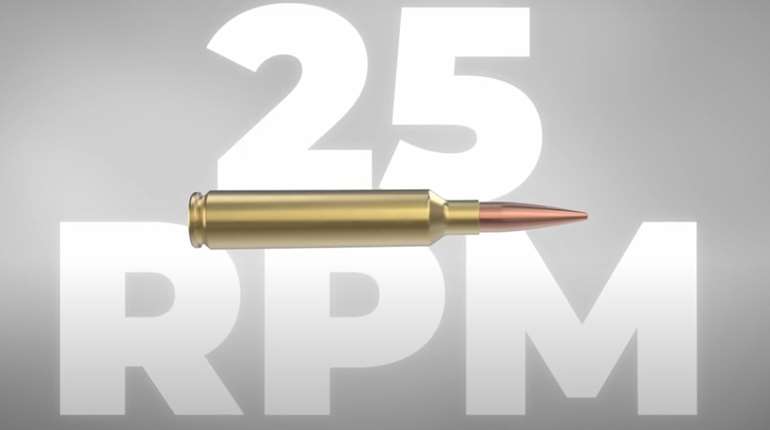
A late-November cold snap had frozen up most of the ponds and lakes, and the ice floes careening down the center of the Susquehanna River threatened to sweep any decoys in their path all the way to the Chesapeake. Fortunately our spread—about seven dozen mallards and black ducks and two dozen geese—was shielded from the current by an L-shaped island.
I took a sip of hot chocolate, not yet of coffee-drinking age, but old enough to know that when men hunt ducks they drink from thermoses. A nice group of mallards had already landed in the decoys before legal shooting time and had just as quickly scooted when they heard our young Chessie’s high-pitched whines.
As dawn broke a half dozen blacks flew in from behind us. My Dad’s friend Eric greeted them with a few gentle notes and they banked back. A couple of passes later we stood to shoot. Two blacks crumpled; the smaller of the two was the first game animal I ever killed.
Since that initial hunt, I’ve spent more time hunting ducks on rivers than anywhere else. What I like most about rivers is they’re all different, from the mile-wide and foot-deep Susquehanna, to the ocean-like waters at the mouth of the Mississippi to the creek-like streams such as the North Platte. Rivers are everywhere, and public hunting opportunities abound even in urban areas; for example, I’ve enjoyed some of the best duck hunting of my life on the Potomac River just outside the Washington, D.C., beltway.
If you know how to hunt a river, you can hunt ducks practically anywhere and, because the rivers are last to freeze, you can hunt long after the other guys have hung up their waders until next year. Here’s how to decoy waterfowl in the most common scenarios you’ll encounter hunting rivers.
Deep-River Diver Hunting
Puddle ducks are great, but if you’ve never experienced the thrill of a flock of bluebills speeding into your decoys like two-pound rockets, you’re missing out. Captain Bob Wetherald is a pro staffer for Benelli and Final Approach, and one of the Potomac River’s most respected guides for divers and sea ducks. He hunts out of a gunning rig 400 yards or more from shore.
“Buffleheads will run the shoreline. You can pull them with decoys a little, but bluebills, canvasbacks and most divers definitely like to be out in the middle of the river where they feel less pressured,” Wetherald says. “This is especially true late in the year.”
When he’s scouting, Wetherald looks for huge rafts of birds feeding or resting. Divers and sea ducks feast on mussels, oysters and aquatic grasses, making sandbars prime hunting locations.
“If you find a raft of ducks, you have to use a topographical chart to figure out why they’re there,” Wetherald says. “Maybe it’s just a random thing, and you can’t guarantee that the ducks will be back, but if there’s a sandbar beneath the ducks, you can probably associate their activity with it.”
Wetherald’s decoy spread consists of about five dozen ducks. The heart of his spread is formed by two gang-rigged lines of a dozen bluebills each. (A heavy weight at the end of each line holds the decoys in place.) The lines form a “V” shape facing into the current. Social groups of bluebills, canvasbacks, goldeneyes, buffleheads, scoters and long-tailed ducks are added on either side of the lines, the majority of them inside the “V.”
“I think buffleheads are always good to have in the spread because they improve visibility for all ducks, and buffleheads decoy well,” Wetherald explains, “but be careful not to use too many canvasbacks. Cans aren’t real social when they find a good food source. They’re the biggest divers and can be real bullies. Some ducks even flare from cans.”
You can leave a little pocket in the “V” if you wish, but divers and sea ducks don’t need a landing area like puddle ducks and frequently brush up against one another on the water. “I’ll even mix the sea ducks right in with the divers, and we’ll kill both of them out of the same spread,” Wetherald says.
The “V” and most of the ducks within it should always be positioned facing into the current, regardless of wind direction, since divers feed and swim primarily against the current. The wind will affect how you position the boat. You want it blowing parallel to the blind, providing all hunters with shots as the ducks land into the wind.
As a final touch, Wetherald advises the placement of six Canada goose floaters off to one side of the boat. “They give the divers confidence,” he says, “and you might pull a bonus goose or two.”
Early- and Mid-Season Rivers
As a general rule, it’s best to hunt rivers in the late-season, either after they’ve flooded into surrounding crop fields or all the other water in the area is frozen over. Rivers can produce good hunting all season though, and in many cases they’re the only public areas available. So how do you hunt a river when the ducks are dispersed across so much open water?
“Scouting really comes into play, because you may have a 5-mile stretch of river with only two places the ducks want to be,” says Tim Herald, host of “The Zone TV” on The Sportsman Channel. “Run the river in your boat, find a concentration of ducks and geese resting on an island and come back the next day to hunt it. Or, if you can see the river from the road, drive it and glass it with a binocular. I focus my scouting on stretches of the river near crops.”
Check out the illustrations of each of the different river hunting scenarios.
Islands are good places to find waterfowl, because they block the current and provide a sanctuary for ducks to raft up and rest. Knee-deep, calm, slow water is where the puddle ducks want to be on rivers. Sandbars are also good, but they cause boat blinds to stick out like sore thumbs, so to hunt them effectively try using layout blinds or moving your decoy spread farther from the blind.
“We’ll slide the decoys an extra 15 to 20 yards down the bank if we’re sticking out, so the entire flock isn’t looking right as us,” says Field Hudnall, an Avery pro staffer and founder of Field Proven Calls. “It’s farther shooting, but you’re better off shooting a goose at 30 yards than not at all.”
Once you have a spot selected, it’s time to pack every decoy you own into the boat and go hunting. That may be a slight exaggeration, but hunting a river before the freeze is all about maximizing your spread’s visibility. With all that open water, you likely won’t be “on the X.” Unlike marsh or pothole hunting, most of the ducks you see will probably have another destination in mind, so in order to decoy them you have to draw their attention.
“I like a minimum of six dozen magnum mallards, the bigger the better,” Herald says. “We’ll tailor that to the number of ducks we’ve seen in the area. If we see 300 ducks rafted up somewhere, we’ll put out as many decoys as we can. We also use weighted keels and heavy anchors on the river so the current doesn’t flip them over or carry them away.”
Altie Lannom, Mossy Oak’s regional pro staff manager for the Mississippi Flyway and president of the Lannom Call Company, also likes magnum-sized decoys. He arranges his dabblers into an old-school “J-hook” spread no farther than 30 yards from the blind. He then positions lines of two or three dozen divers upwind and a dozen downwind from the dabblers, no more than 50 yards from the blind.
“The diver decoys help kill a few bonus divers, but they’re mostly there to catch the attention of dabblers,” Lannom says. “The white on the divers really adds visibility.”
Similarly, I like to place a couple dozen geese upwind of my dabbler spread. Even if you’re primarily hunting puddle ducks, goose decoys improve visibility because they are large and their white-on-black coloration is easily seen from a distance. Plus you’ll inevitably see a few geese.
Another secret to visibility is placing the decoys slightly farther apart than normal. From an aerial view, your spread will look like a big, wide raft of ducks rather than a smaller blob.
This is no time for subtlety, and that includes calling strategy. When a group of ducks is heading down the river 100 to 150 yards away from my spread, it’s one instance when I’m not worried about hitting a bad note. My goal isn’t to sound perfect (I never do anyway); it’s simply to get the ducks’ attention. Hammer them with a relatively loud greeting or hail call. If any of the ducks turn their heads to look, you’re in business. You can finesse them with softer, more realistic calling once they’ve swung and made a pass.
Prime Time: Late-Season Rivers
Late December and January are when rivers really shine. Most of the birds have moved on to warmer climates, but those that persist have fewer and fewer options as the potholes, creeks and sloughs freeze up. If you live far enough north that even the river begins to freeze, you have an opportunity to kill some prime mallards. You don’t even have to be a great duck hunter, just one who’s willing to work—find the open water, bust your tail to access and hunt it despite bone-chilling temperatures, and you’ll be rewarded with a fully plumed January greenhead or two.
“I don’t even hunt the river until it’s a last resort,” says “Big” Sean Hammock, who hunts the St. Joseph River in northern Indiana and has guided waterfowlers since the age of 16. “I like it when it’s half-iced over, when the conditions are so bad that everybody else is at home.”
Hammock drives along the river looking for waterfowl and pockets of open water. “If you spot geese in a field and find the nearest open water, you’re going to kill them almost no matter what,” Hammock says.
When he finds open water, which can often be found near power plants and factories, he’ll put on ice cleats over his waders and push a double-welded aluminum boat across the ice. Once it starts to break through, Hammock and the other hunters get in, fire up the outboard and motor through to the open water. (This type of hunting is not without risks. Make sure your equipment is in top shape, always wear life vests and never hunt alone.)
“We’ll break ice and increase the size of the hole until we know we have good, thick ice to rest our decoys on,” Hammock says. “Then I’ll break a path through the ice all the way to the bank so we can use the boat to retrieve ducks.”
Almost all of Hammock’s spread is placed on the ice. He packs 50-100 full-bodies and shells tight around the edge, with lots of sleepers looking nice and comfy as if they just got back from feeding. He’ll toss a dozen decoys in the water in a line to appear as if they just landed and are swimming in to rest with the group. Sometimes he’ll add a half dozen mallards, but he believes mallards will decoy to geese anyway.
Check out the illustrations of each of the different river hunting scenarios.
“I’ll also splash some water on either side of the shells. It’ll freeze and keep them from blowing around,” Hammock says. “And most full-bodies have a spot in the base or between their feet where you can run a screw down into the ice to hold them in place.”
Once Hammock’s spread is ready to rock, he does very little calling, since he’s already where the geese want to be.
“Plus when geese return from feeding, they’re not real aggressive. Most of the spread is relaxed sleepers, so a lot of calling wouldn’t be natural. The only calling I’ll do is soft murmurs and clucking,” he says.
Small Rivers and Big Creeks
Not all rivers are giant expanses requiring huge spreads and obnoxious calling tactics. Herald spends a lot of time hunting the Kentucky River, which is almost creek-like in size.
“Small rivers are my favorite type to hunt, because you can scout them and really determine where the ducks are going,” he says.
Smaller water means smaller spreads, because there will be fewer ducks and hopefully they already want to be where your decoys are located. Herald uses only one to two dozen, often arranged in a shallow “U” shape, with a spinner or two on either side (where legal). His favorite spot is just past a shallow, rocky riffle to add motion to the decoys. The entire spread consists of dabblers, since you’ll rarely find geese and divers inhabiting such waters.
“You tend to get a lot of in-your-face shooting, and it makes for a real quality duck hunt,” Herald explains.
Flood-Prone Rivers
Lannon hunts rivers all season. Two of his favorites include the Ohio and Mississippi, but his best waterfowling doesn’t occur until after the southern Illinois River floods its banks late in the season.
“There’s always some duck traffic on the rivers,” Lannom says, “but after the river floods they tend to concentrate more on a food source. You may go a while without seeing any ducks, but when you do you’ll find a bunch.”
Lannom scouts the flooded backwaters by walking them or, if possible, cruising through in a boat until he flushes ducks. He advises checking anywhere with oak trees, as the floodwaters create a floating buffet of acorns that puddle ducks can’t resist. Flooded crop fields, especially corn, are also good bets. Once you locate a feeding area, the hard part’s behind you. Just return with a simple spread.
“You don’t need any more decoys than you can carry in on your back,” Lannom advises. “If the ducks have been going there to feed, there’s a good chance they are planning to go there again anyway. A small spread and some light calling is all you need. I’ll use a boat blind if there’s an opportunity, but typically I just use a tree to hide behind and place the decoys far enough away that the ducks won’t look directly at me.”




































